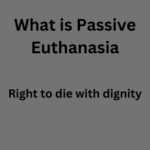MHA asks states, UTs to conduct fire safety review of hospitals

MHA asks states, UTs to conduct fire safety review of hospitals providing Covid-19 care. In a letter to chief secretaries and UT administrators, Union home secretary Ajay Kumar Bhalla drew their attention to fires caused by short circuits.
There have been lethal fires in hospital buildings, together with these treating COVID-19 sufferers. The Nationwide Crime Data Bureau (NCRB) says 330 individuals died in industrial constructing fires in 2019, whereas fatalities for residential or dwelling buildings have been a lot larger at 6,329.
LEARNING FROM HOME/ WITHOUT CLASSES/ BASICS
Health and Public Order being state subjects, it implies that the respective state health departments and muncipalities along with the state public works department, will play a crucial role in implementing these guidelines on the ground.
Fire services in India come under the 12th schedule of the Constitution under the provisions of Article 243W of the Constitution, the performance of functions listed in the 12th schedule comes under the domain of municipalities. Presently, fire prevention and fire fighting services are organized by the concerned states, Union Territories (UTs) and Urban Local Bodies (ULBs).
GOVERNMENT GUIDELINES
Model Bill to Provide for the Maintenance of Fire and Emergency Service for the State
(Revised in 2019) An Act to provide for the Maintenance of Fire and Emergency Service and to make more effective provisions for the fire prevention and fire safety measures in various types of buildings and premises in the State and the matter connected therewith.
The National Building Code of India (NBC), a comprehensive building Code, is a national instrument providing guidelines for regulating the building construction activities across the country. It serves as a Model Code for adoption by all agencies involved in building construction works be they Public Works Departments, other government construction departments, local bodies or private construction agencies.
The Code mainly contains administrative regulations, development control rules and general building requirements; fire safety requirements; stipulations regarding materials, structural design and construction (including safety); building and plumbing services; approach to sustainability; and asset and facility management.
WHAT IS LACKING
Inadequate or non- compliance of structural elements of hospitals to building codes and other safety norms which result in the failure of hospital structures and their component non-structural elements;
Absence of an operational Hospital Disaster Management Plan;
Lack of planning and preparedness to respond to disasters;
Inadequate or complete lack of internal and external communication;
and Lack of networking amongst hospitals.
WHAT NEED TO BE DONE
Hospitals need to prioritize periodic testing of firefighting systems and regular training of staff on their use.
Judicious placement of electrical equipment combined with oxygen monitoring devices in intensive care areas is recommended.
Storage of flammable materials and placement of central gas supply points should be away from the vicinity of patient care areas and always in conjunction with robust fire detection and control methods.
Hospitals should adhere to their planned capacity.
Simple measures such as judicious placement of electrical devices (particularly air conditioners) and monitoring equipment in oxygen rich areas is the need of the hour.
Safety audits should be conducted on periodical basis to check the functioning of firefighting equipment
Training programs and dissemination of fire preparedness policy among staff members should be given priority.
Internal fire control systems need to be strengthened and buffer capacity is to be ensured.
Flammable materials should be stored away from the patient care areas, never in the basement and always in conjunction with robust fire detection and control systems.
Hospitals, especially in the government sector, should strictly adhere to their planned capacity both in terms of physical space as well as energy needs.
It is the responsibility of every healthcare establishment to ensure that fire safety standards and regulations are followed to prevent fire accidents and the consequent human suffering.




0 Comments